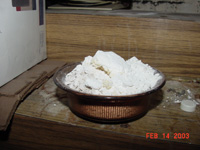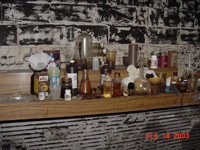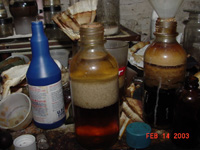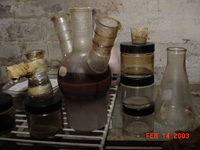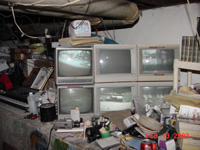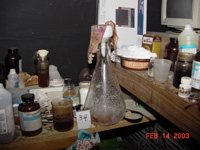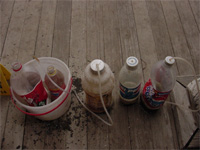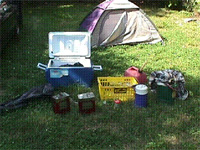Indicators of Methamphetamine Manufacturing
- Strong smell that might resemble urine or unusual chemical smell like ether, ammonia or acetone.
- Little or no traffic during the day, but lots of traffic at extremely late hours.
- Extra efforts made to cover windows or reinforce doors.
- Residents never putting out their trash or instead burn their own trash.
- Lab materials surrounding the property (lantern fuel cans, red chemically stained coffee filters, clear glass jugs and duct tape).
- Vehicles loaded with trunks, chemical containers or basic chemistry paraphernalia - glassware rubber tubing, etc.
- Laboratory glassware being carried into the residence.
- Inhabitants smoking outside due to the fumes.
Barns, outbuildings, hotel and motel rooms, apartments, storage sheds, garages and vacant buildings are common places where meth is produced. Remote locations are often chosen to hide the smell from the chemicals needed to make the drug.
Hazardous chemicals may be dumped on the ground or in nearby streams and lakes, or simply left behind. These toxic waste products can remain for a long time as residue on bathtubs, toilets or sinks. As an example, motel rooms and apartments that are used to make meth can be a health risk to the next unsuspecting tenants.
Methamphetamine Manufacturing Pictures
Click on an image to see a larger version.
Further Information
For more information/pictures about types of drugs and how to identify them, please visit the US Drug Enforcement Administration website.







